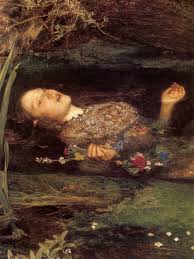|
Past and Present
I had poor experiences of art whilst at secondary school. If your drawing wasn’t up to scratch you were branded a failure (or made to feel like one!) That was fine though – it was only art – you only had to do it until the end of year 8. Fast-forward 9 years and I was sitting in a warm classroom on Avenue Campus, University of Northampton muddling through a BA Primary Ed with QTS, within which I had 12 hours of lectures for each of the foundation subjects. It was during one of these lectures that I said to my lecturer. “I hate art!” I expanded (obviously) to offer my opinion on art, specifically modern art, which most 5 year olds could match ability wise! The art at university wasn’t all about drawing though it was more about stories. Stories in the images and the stories behind the images. I may have not liked art – but I loved stories! Rose, my lecturer, took me on a journey – both literal and metaphorical – through art. We visited Tate Britain and Tate Modern and I found out that behind every great picture there was a story, either about what the painting contained, about the method used to paint it or about the painter themselves. That was it I was hooked. A bit like how I got hooked on poetry whilst studying for my A Levels. Especially the metaphysical poets like John Donne. The Flea got me – read through that poem as an 18 year old rugby playing lad and it has little meaning. It sucked me first, and now sucks thee, And in this flea our two bloods mingled be; These two lines don’t suggest love to an adolescent mind BUT read it again when a great teacher telling you what everything means and it becomes a great story. A man lay in bed with his lover, he points out a flea and tells her that what she is denying him is happening inside the flea. Their bloods are ‘mingled.’ At this point his lover tries to kill the flea and he tries to persuade her not to but she does. Even after this cruel act he turns the event into his favour, once again trying to persuade her to sleep with him. This was exactly the effect that visiting the London galleries with an expert had on me. I remember ‘Second Version of Triptych 1944’ by Francis Bacon, pictured.
All of the above are good stories and even Van Gogh’s ear slicing tale pales into insignificance if the stories about my favourite artists are to be believed.
The stories told about The Pre Raphaelite brotherhood are legendary, many of the group lived in London, in and among the gin dens and brothels that plagued the city in that era. Many of their relatives, friends and neighbours acted as models for their pictures. In Millais’ ‘Christ in the house of his parents’ we see, according to Charles Dickens, an ugly Mary, based on Millais’ sister in law – other critics of the day call the characters in the painting ‘alcoholics and slum-dwellers’ I think this makes me like them even more!
So I was caught in a toss-up between two pictures: ‘The Awakening Conscience’ by Holman Hunt and ‘Past and Present’ by Augustus Egg.
Egg wins - I love his 'Past and Present' triptych and the narrative behind it. Rather than tell you the story behind the image I am going to ask you to see if you can find in the three paintings the symbols which tell the story behind the triptych entitled Past and Present. Each image has its own title too. ‘Misfortune,’ ‘Despair’ and ‘Prayer’ Here we see a family ripped apart due to a mother’s infidelity. Past and Present
Click an image to enlarge
In the images can you see the following? · The object which reveals her infidelity to him? · The object which shows she was trapped in a loveless marriage? · Three references to the biblical story of Adam and Eve and their expulsion from the Garden of Eden? · Whose portrait hangs below the image entitled ‘The Fall’ and whose hangs below the image entitled ‘Abandoned?’ · Which of the three images are the past and which are the present? · What can we see which sybolises the woman’s impending departure? · Who is looking at the moon? What are they thinking? · Is there any proof that she actually committed adultery? · How can we tell the two shoulder paintings depict the same moment in time? I would love to read other interpretations too! Please think about the answers before looking them up on Wikipedia and we can discuss them during #PaintingsTalk Join us on Tuesday for #PaintingsTalk from 8pm. Just search #PaintingsTalk on twitter and jump in! Comments are closed.
|
Archives
July 2020
Categories
All
|






 RSS Feed
RSS Feed
